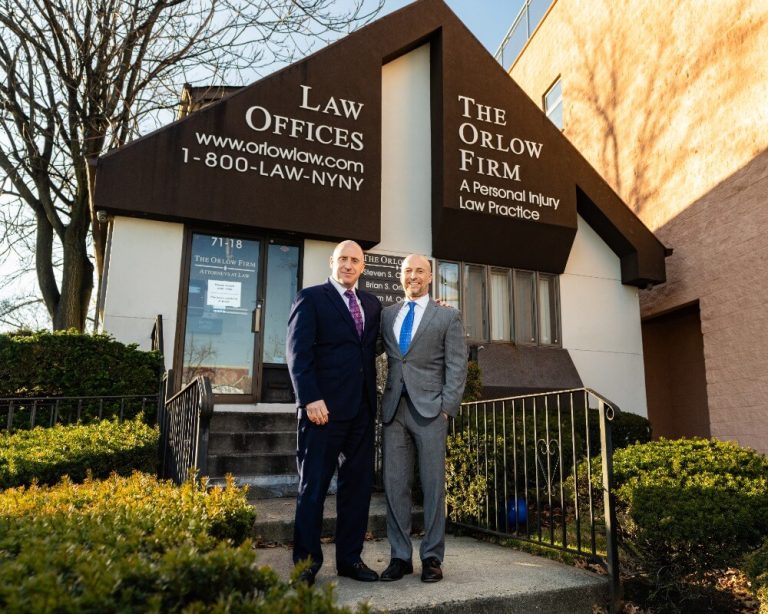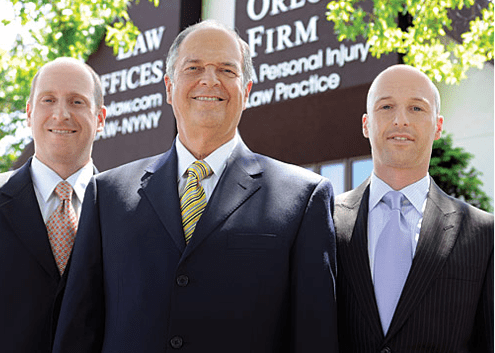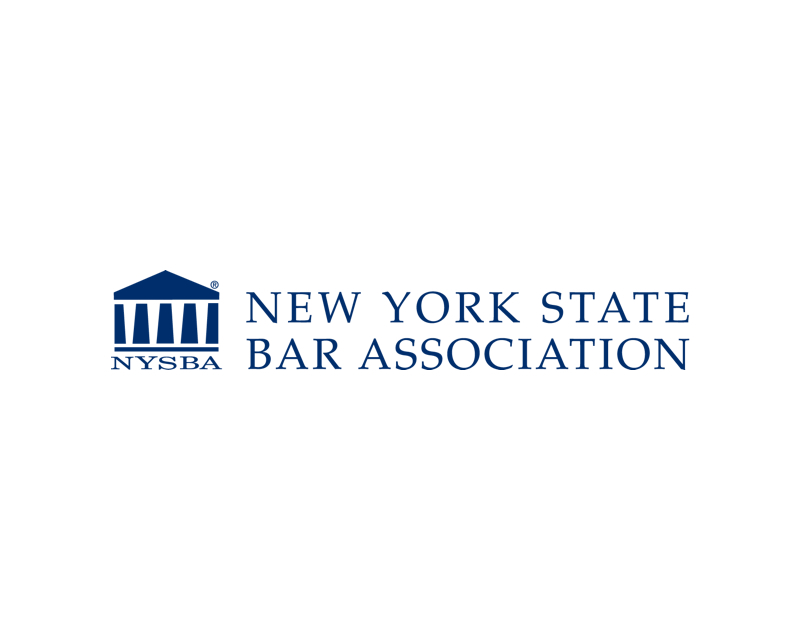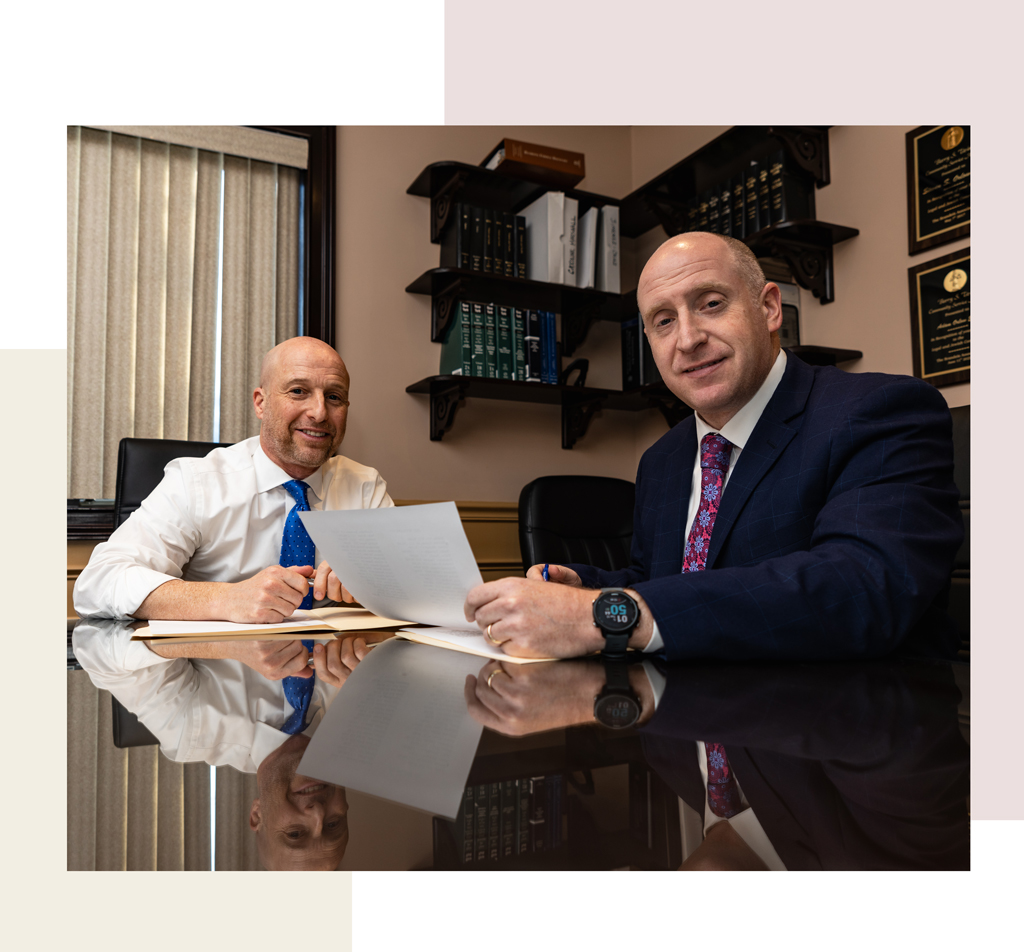The Following People Contributed to This Page
Cindy Cordova is a seasoned legal writer with over seven years of experience crafting clear, informative, and professional content for law firm websites. With a B.A. in English from Trinity Christian College, she combines her strong writing background with a deep understanding of legal topics to help firms connect with their clients through trustworthy and accessible content.
- June 25, 2025
What Is Summary Judgment in a New York Personal Injury Case?
Quick Answer: In New York personal injury cases, a summary judgment is a request for a judge to decide the case without a trial, based on the argument that there are no genuinely disputed facts that require a full trial. Essentially, one party argues that, based on the undisputed facts and controlling law, they are entitled to judgment in their favor as a matter of law. It’s often used by defendants to argue that the plaintiff’s case is weak or lacks a legal basis.
Here’s a more detailed explanation of summary judgements:
- Purpose: Summary judgment aims to streamline the legal process by resolving cases where there’s no real disagreement about the essential facts. It is designed to avoid unnecessary trials when the legal outcome is clear.
- Timing: This motion is typically filed after the discovery phase of a lawsuit, once parties have exchanged information and evidence. It is often made after a “note of issue” has been filed, signaling that the case is legally ready for trial.
- Who Can File: While both plaintiffs and defendants can file for summary judgment, in personal injury cases in New York, it is more common for defendants to make such motions. This often occurs when they argue the plaintiff hasn’t met the legal requirement for a “serious injury” or that the defendant was not at fault based on the evidence presented.
- Burden of Proof: The party filing the motion bears the initial burden of demonstrating to the court that there are no genuine issues of material fact that a trial would need to resolve. They must show that, even viewing the evidence in the best light for the opposing party, they should still win.
- Outcome: If the motion for summary judgment is granted by the judge, it results in a final judgment for the moving party, potentially avoiding the time, expense, and uncertainty of a full trial. If denied, the case proceeds to trial.
- Key Consideration: Courts in New York generally approach summary judgment motions with caution, particularly in negligence cases. All facts and inferences drawn from the evidence are typically interpreted in the light most favorable to the non-moving party (the party opposing the motion), reflecting the preference for a jury to decide disputed facts.
If you have you’ve been injured in an accident in NYC and have questions about your case, contact our personal injury law firm at (646) 647-3398 for a free, confidential consultation.
How Can Summary Judgment End a Case Before Trial in NYC?
Summary judgment is a legal request asking the court to decide a case without going to trial. In a personal injury case in New York City, this can happen when one side believes there are no important facts in dispute. If the judge agrees, they can end the case early without a jury ever hearing it.
In most personal injury cases, the facts—like how the injury happened or who was to blame—are not always clear. But if the defense believes there’s no proof that they are responsible, they can file a “motion for summary judgment.” This means they are asking the judge to review the evidence and decide the case based on the law alone.
If the judge grants the motion, the case ends right there for the claims involved. The injured person (the plaintiff) could lose the chance to bring those parts of the case to trial. If all claims are dismissed, the case won’t move forward at all. This can save the defendant time and money and may avoid a trial altogether.
For example, imagine someone slips on a wet floor in a Bronx grocery store. If the store owner argues they had no way of knowing the floor was wet in time to fix it, they might ask the judge for summary judgment. If the injured person can’t show that the store knew (or should have known) about the danger, the judge may agree to end the case before it reaches a jury.
Summary judgment is most often used:
- To dismiss a weak claim when the plaintiff has not shown enough evidence to prove the defendant was at fault.
- To simplify the case by removing certain claims or defendants before trial.
- To avoid a trial altogether when the facts and the law clearly support one side.
It’s important to understand that a motion for summary judgment does not mean the judge believes one side more than the other. It simply means the court thinks there are no undecided facts that need to be reviewed by a jury. If there are still important facts in question—like whether the property owner was careless—the case is likely to continue.
If you’re involved in a NYC personal injury case and the other side files a motion for summary judgment, it’s a serious matter. It could end part or all of your case before you have a chance to present it in court. Having legal support can make a big difference in how you respond and protect your rights.
If you have questions about summary judgment or your case, contact The Orlow Firm at (646) 647-3398 for a free, confidential consultation.
When Do Defendants in NYC Personal Injury Cases File for Summary Judgment?
In New York City personal injury cases, a defendant may file a motion for summary judgment when they believe there is no need for a trial. This usually happens after both sides have shared key evidence during the discovery phase. The defendant is asking the court to end the case early because they believe there are no real disputes about the important facts.
In a personal injury lawsuit, the defendant is usually the person or party accused of causing harm. They may file for summary judgment if they think:
- No legal responsibility: They argue they were not legally responsible for the injury, even if the facts are true.
- No proof of harm: They claim the injured person hasn’t shown enough evidence of real damage or loss.
- No serious injury: Especially in car accident cases under New York’s no-fault law, they may argue that the victim’s injury doesn’t meet the “serious injury” standard required to sue.
- The injured person is at fault: They believe the injury was caused by the person bringing the lawsuit, not by the defendant.
Defendants often file these motions after major steps in the case, such as depositions (sworn interviews) or once evidence has been reviewed by both sides. It’s their way of trying to get the case dismissed without going to trial.
Here’s an example: In a NYC slip and fall case, a store owner may file for summary judgment by arguing there’s no proof they knew about the spill that caused the fall. If the injured person can’t show the store had notice of the hazard, the court might dismiss the case.
It’s important to know that these motions can strongly impact a personal injury case. If granted, the case may end. If denied, the case moves forward to trial or settlement. If you’re facing this situation, having the right legal guidance is key. To discuss your case in more detail, call (646) 647-3398 for a free consultation with The Orlow Firm.
What Must Be Proven to Win a Summary Judgment Motion in New York?
To win a summary judgment motion in a New York personal injury case, the person filing the motion—usually the defendant—must prove that there is no “genuine issue of material fact.” In plain terms, this means they must show there’s no real dispute about what happened and that, based on the law, the case should be decided without going to trial.
New York courts will only grant summary judgment if the facts clearly show one side should win. Here’s what must be proven:
- Complete Lack of Dispute About the Facts: The moving party (usually the defendant) must prove that the main facts of the case are not in question. For example, if there’s video showing the injured person clearly fell due to their own actions—not because of someone else’s negligence—the defendant may argue the facts are undisputed.
- Applying the Law to Those Facts Favors One Side: The court must believe that, under the law, the facts only support one possible outcome. If the defendant shows they did follow all safety rules and had no legal duty to do more, they may argue they’re not legally responsible.
The person filing the motion must support their claim with strong proof. This often includes:
- Sworn Statements (Affidavits): These statements come from witnesses or involved parties and are made under penalty of perjury.
- Evidence: Things like security footage, police reports, medical records, or inspection logs may be used to back up their case.
- Legal Arguments: Lawyers must explain why the law does not support the other side’s claims, using case law and legal rules.
In New York personal injury cases, the defendant might argue that the injury did not meet the state’s “serious injury” threshold. In car accident cases, for example, they may claim the injuries were minor and don’t meet the legal standard required to file a lawsuit.
It’s important to know that even if one side files for summary judgment, the other side can fight it by showing that there is a real dispute over what happened. If there is any doubt about the facts, the court will usually deny the motion and allow the case to move forward to trial.
If you have questions about how summary judgment could affect your personal injury case in New York City, call The Orlow Firm at (646) 647-3398 for a free consultation. We’re here to help you understand your rights every step of the way.
How Does Summary Judgment Affect Injury Victims in NYC?
When a summary judgment is filed in a personal injury case, it can greatly affect the person who was injured. In New York City, a summary judgment is a legal request asking the judge to decide the case without going to trial. If the judge agrees, the case is over—either fully or in part—without the injured person ever having their full story heard in court.
This can have serious consequences for injury victims. Here’s how:
- You could lose your chance to go to trial: If the court grants summary judgment in favor of the other side, you may not get the chance to present your case to a jury.
- Some or all of your claims may be dismissed: A judge may decide that certain parts of your case don’t have enough legal support to move forward. That can reduce the compensation you might receive.
- It can delay your recovery: Dealing with legal motions like summary judgment can take time and energy. This may slow down a possible settlement or court decision.
For example, if you were hurt in a slip and fall in the Bronx and the property owner argues they didn’t know about the danger, they might file for summary judgment. If they win, your case might be dismissed before a jury hears your side.
However, summary judgment isn’t always negative. In some cases, it can help injured people too. If the evidence clearly shows the other party is at fault, your lawyer might file a summary judgment motion on your behalf to avoid a lengthy trial. But this is less common in personal injury cases, where disputes about facts often exist.
If you’re facing a summary judgment in your case, it’s important to act quickly. You’ll need to respond with strong evidence and legal arguments to avoid losing your claim. A qualified attorney can help gather records, witness statements, and expert opinions to challenge the motion.
Summary judgment can be complicated, but you don’t have to face it alone. If you or a loved one has suffered an injury in New York City, contact The Orlow Firm at (646) 647-3398 for a free consultation. We can help you understand your options and fight to keep your case moving forward.
What Happens If the Court Grants or Denies Summary Judgment?
When a court rules on a motion for summary judgment in a New York personal injury case, it can have a major impact on what happens next. This ruling decides whether the case moves forward to trial—or ends right then and there.
If the Court Grants Summary Judgment
When a judge grants summary judgment, it means there’s no need for a trial on that part of the case because there’s no dispute about the key facts. The court is saying that one side—the person who asked for the motion—wins as a matter of law.
- If the defendant wins: The case, or at least a major part of it, may be dismissed. For example, in a car accident case, the court might decide the defendant was not legally responsible, ending the case before it goes to trial.
- If the plaintiff wins: The court might decide the defendant is legally at fault. However, a trial may still be needed to decide how much money the plaintiff should receive in damages.
In either case, granting summary judgment can shorten the legal process, saving time and money for both sides.
If the Court Denies Summary Judgment
When the court denies a motion for summary judgment, it means there’s still a disagreement about important facts. The judge is saying the case should go to trial so a jury can decide how those facts should be interpreted.
- The case continues: Denial doesn’t mean one side wins. It simply means the court can’t decide the case without a trial because the facts are still in dispute.
- The parties may settle: Sometimes, after a denial, both sides may try to reach a settlement to avoid the time and expense of going to trial.
Appealing the Decision
If the court makes a summary judgment decision that one party disagrees with, they may be able to appeal. However, appeals take time and must meet strict legal standards.
Examples in New York City
In a New York City slip and fall case, for example, a business might ask for summary judgment by claiming that video footage shows the floor was clear and clean. If the court agrees, the injury case could be dismissed without a trial. But if there’s conflicting evidence—like witness statements about the floor being wet—summary judgment might be denied, and the case would move forward.
Understanding what happens when summary judgment is granted or denied is important for anyone involved in a personal injury case. If you’re facing this situation, speaking with a qualified attorney can help you know your rights and next steps. For help with your case, contact The Orlow Firm at (646) 647-3398 for a free consultation.
Can You Fight a Summary Judgment Motion in a New York Personal Injury Case?
Yes, you can fight a summary judgment motion in a New York personal injury case. If the other side asks the court for summary judgment, they are asking the judge to decide the case without a trial. But if there are real issues or unanswered questions in your case, you have the right to respond and fight that motion.
To successfully oppose summary judgment, you need to show that there are important facts in dispute. These are facts that a jury should decide, not a judge. If the judge agrees that questions remain, the case can continue toward trial.
Here’s how injured people—or their attorneys—can challenge a summary judgment motion in New York:
- Review the motion carefully: The motion will include legal arguments and evidence like documents, sworn statements, or video footage. It’s important to check for mistakes or misleading claims.
- Point out disputed facts: Show the court that you and the other party disagree on important details—such as how the accident happened or who was at fault.
- Provide evidence supporting your side: You can respond with your own documents, photos, witness statements, or expert opinions. This kind of evidence can show why a trial is necessary.
- Argue the law clearly: Sometimes, the motion incorrectly applies the law. A good legal reply points out these errors and explains why the case doesn’t meet the legal rule for summary judgment.
For example, in a New York City slip and fall case, the building owner might ask for summary judgment by saying it had no way to know about the spill that caused the fall. If you can show that a worker walked by the spill minutes earlier without cleaning it, that might be enough to fight the motion successfully.
Fighting a summary judgment motion requires strong organization and timely action. Courts have deadlines for submitting your response. Being late or missing key documents can hurt your case.
If you receive a summary judgment motion in your injury case, it’s important to act quickly. You don’t have to go through it alone. To get help with your case, call The Orlow Firm at (646) 647-3398 for a free consultation.
Why Summary Judgment Might Be Used in Slip and Fall or Car Accident Cases in NYC
In New York City, summary judgment is often used in slip and fall and car accident cases when one party believes there is no real dispute about the key facts. This allows a judge to end the case without a trial. Summary judgment saves both time and court resources when it’s clear that one side should win under the law.
In slip and fall cases, property owners often ask for summary judgment to show they had no legal responsibility. For example, imagine someone slips on a wet floor in a Brooklyn grocery store. The store’s insurance company may argue that the spill happened moments before the fall, giving the store no time to clean it up. If they can prove this with evidence—like security footage or employee statements—they might ask the judge to dismiss the case through summary judgment.
In car accident claims, summary judgment can come into play if fault is obviously clear or completely denied. For example:
- Clear responsibility: If you’re rear-ended on the FDR Drive and it’s clear the other driver was at fault, your attorney may seek summary judgment so you don’t have to prove liability in court.
- No serious injury: On the other side, the defense might argue your injuries don’t meet New York’s “serious injury” threshold. If they submit medical records from independent doctors showing your injuries are mild, they might ask for a summary judgment to avoid trial.
Defendants often use summary judgment in these NYC cases to end the claim early or limit the issues that go to trial. For example, the court might agree with the defense that the property owner wasn’t legally responsible, but still allow a jury to decide if a visitor’s behavior contributed to the accident.
Because every case is unique, it’s important to carefully review the details. Medical records, witness accounts, photos, and even weather reports can all play a role in whether summary judgment is granted or denied.
If you’re injured in NYC and think your case might be affected by summary judgment, having skilled legal guidance can make a big difference. For personalized help, call The Orlow Firm at (646) 647-3398 for a free consultation.
Frequently Asked Questions About Summary Judgment in New York
- What is summary judgment? Summary judgment is when a judge decides a case without going to trial. It happens when the court finds there is no real dispute about the important facts. In a personal injury case, this can mean the judge decides one side wins based on the law alone.
- Who can ask for summary judgment? Either side in a personal injury case can file a motion for summary judgment. This is usually done by the defendant (the party being sued) to try to get the case dismissed before trial. Sometimes the injured person (plaintiff) may also file if they believe the facts clearly support their claim.
- When is summary judgment used? Summary judgment is usually requested after the discovery phase. This is the part of the case when both sides exchange evidence, such as witness statements and medical records. Once all important information is shared, one side may argue there’s no need for a trial.
- Can the judge decide only part of the case? Yes. The court may grant “partial” summary judgment. This means the judge settles some issues, but not others. For example, the court could decide that the defendant was at fault, but still leave the question of how much money is owed for the trial.
- Is summary judgment the same as a dismissal? Not exactly. Summary judgment is a final ruling on part or all of the case, based on the law and facts. A dismissal might happen earlier in the case, often for procedural reasons like filing in the wrong court. Both outcomes can end a case, but they happen in different ways.
- What happens if summary judgment is denied? If the judge denies the motion, the case moves forward toward trial. This means the judge believes there are still important facts that need to be decided by a jury or the judge at trial.
- Can summary judgment be appealed? In some cases, yes. If a judge grants summary judgment, the losing side may be able to appeal the decision to a higher court. However, appeals can be complicated and may take a long time.
- Does New York law affect how summary judgment works? Yes. In New York, courts can only grant summary judgment if there is no real issue of fact. Also, the party asking for summary judgment must submit strong evidence, such as sworn statements or records. The other side can fight back with their own evidence to show that a trial is still needed.
- Are summary judgment motions common in NYC personal injury cases? They are fairly common, especially in slip and fall or car accident cases. Defendants in New York City may try to argue that the injured person lacks enough proof, or that the injury was not their fault. That’s why collecting strong evidence early in the case is so important.
- Can I stop summary judgment if I have more evidence? Possibly. If you need more time to gather facts, your lawyer can ask the court to delay the decision. Courts may allow extra time if it is reasonable. This is one reason it’s important to speak with an attorney as soon as possible.
If you have questions about how summary judgment could affect your personal injury case in New York City, you don’t have to face it alone. Call The Orlow Firm at (646) 647-3398 for a free, confidential consultation.
Contact The Orlow Firm for a Free Consultation on Your Personal Injury Case

If you or someone you love has been hurt in an accident in New York City, dealing with a legal process like summary judgment can feel overwhelming. At The Orlow Firm, we’re here to help you understand what’s happening in your case—especially if a summary judgment motion has been filed.
A summary judgment motion asks the court to decide a case or part of it without going to trial. This can happen when one side believes there are no real facts to argue and they should win based on the law alone. If you’re facing this situation, it’s important to have legal support on your side.
During a free consultation with The Orlow Firm, we can help you:
- Understand what summary judgment means in the context of your personal injury case
- Review court documents to see if there’s a strong argument against your claim
- Explore ways to respond if the other side is trying to dismiss your case early
- Explain your legal options if the summary judgment decision is not in your favor
- Help you prepare evidence to support your case if summary judgment does not end it
We know that navigating your way through the legal system in New York can be confusing, especially when dealing with injuries, medical bills, and the stress of a court process. Our goal is to make sure your side of the story is heard and your rights are protected.
If you have received notice that the defendant filed a summary judgment motion, or if a court has already ruled, it’s not too late to get help. The sooner you speak with a personal injury attorney, the better chance you have to protect your interests.
Call The Orlow Firm at (646) 647-3398 today to schedule your free consultation. We’ll walk you through the steps, answer your questions, and help you understand your options moving forward.
The Following People Contributed to This Page
Cindy Cordova is a seasoned legal writer with over seven years of experience crafting clear, informative, and professional content for law firm websites. With a B.A. in English from Trinity Christian College, she combines her strong writing background with a deep understanding of legal topics to help firms connect with their clients through trustworthy and accessible content.










